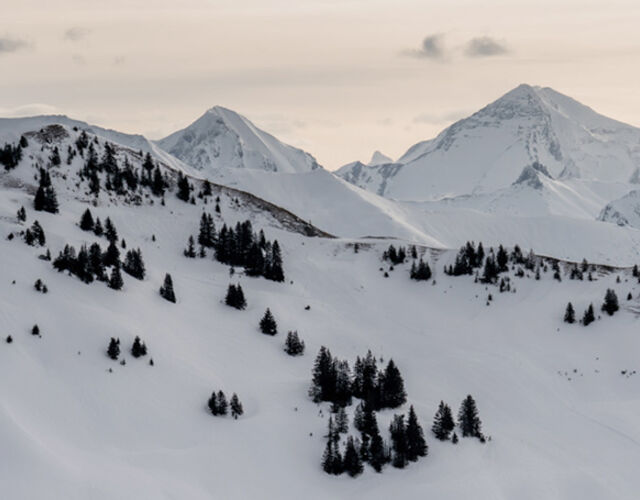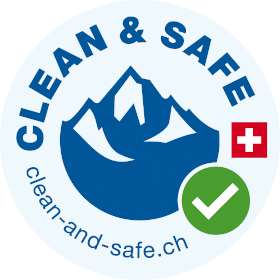Regional products
Regional products

Regional products
"What we do today determines what the world will be like tomorrow " (Marie von Ebner-Eschenbach)
Our region is known for its premium-quality regional specialities. We don't mean just its cheese and meat products, but also traditional crafts such as toboggan-building or the art of paper-cutting. You will find regional products in many businesses, and hear interesting details about their origin or production.
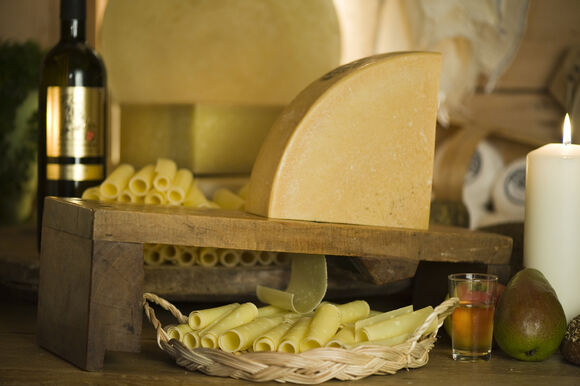
Hobelkäse, mountain cheese and alpine cheese
Almost everything revolves around milk on all the farms in the Destination Gstaad. Alpine cheese, Hobelkäse and mountain cheese are just a few of the region's top-quality products. The producers have two meet strict regulations in order to be permitted to market their products under the relevant classification and the quality seal "Appellation d'origine contrôlée (AOC)". These requirements are stipulated in the specification of the Swiss Federal Office for Agriculture. Alpkäse, or Alpine cheese, is therefore is a full-fat hard cheese made of unpasteurised Alpine milk with a hard rind. It is round, with a diameter of between 28 and 48 cm and weighs between 5 and 14 kg. When it is refined into Hobelkäse, it becomes an extremely hard cheese, which is traditionally finely sliced with a slicer before being served. The designation Bergkäse, or mountain cheese, may only be used to describe cheese actually made in the valley.

Air-dried "Simmental" beef
Farmers in the Saanenland and Simmental Valley predominantly breed spotted Simmental cattle. Air-dried meat is a veritable regional speciality. Raw pieces of meat are stored in a mixture of salt, herbs and spices and then hung up to dry in the air. Large sections of meat can take up to one and a half years to dry. Tip: Try spicy Simmental air-dried meat on its own or with a little Saanen mustard.
Saanen mustard

Saanen mustard
Saanen mustard is one of the many regional specialities of the Saanenland region. It is served in a small dish with ham and sausages. It can be kept in a cool place for up to three months. Mustard is traditionally made from mustard seeds and grape must. However, this is not the case in the Saanenland, where the main ingredient is cherry must. Every family has its own closely guarded secret recipe.
Extraordinary culinary experiences

Kobi eggs
For more than twenty years, the Zeller family has been producing free-range eggs on their farm in Grund near Gstaad and caring for their almost 2,000 hens with a great deal of passion. They pack and process the eggs at home, and you will find their products in retail shops, as well as in hotels and restaurants.

Honey from the region
More than 70 bee-keepers take care of around 700 bee colonies in our holiday region. At honey harvest time, this adds up to a bee population of about 28 million bees feeding on wild and garden flowers, as well as fruit trees and berry bushes. As with Alpine herdsmen, some bee-keepers move their colonies to higher altitudes in summer, where a profusion of different flowers awaits. The same applies to bee colonies in the different valleys. This produces honey with many different consistencies and colours. You can find regional honey in retail trade and in Landi shops. Many bee-keepers also sell their honey directly from the farm.
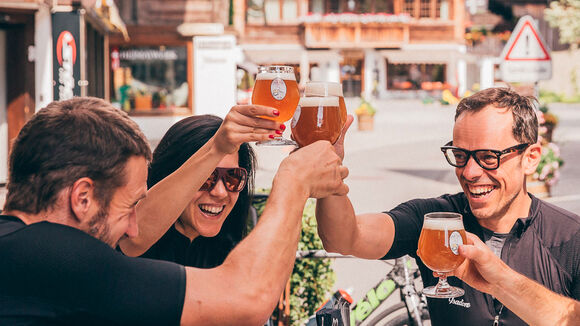
Saanegutsch Beer from Saanen
Seven years ago, Saanenbier was born during a beer round with colleagues. At first, it was brewed only for personal use and, above all, a lot was tried out. After the beer appeared on a menu of a restaurant, the "beer idea" developed further and further. Today, about 35,000 bottles are brewed per year. There are four different varieties, and the mango flavored beer is very tasty even for non-beer lovers. You can find "Saanengutsch" almost in every regional restaurant and in retail stores. So we say: Cheers!

Mountain Ice Cream
These ice creams are made from milk, cream and yogurt from the Saanen and Simmental valleys. In summer, the milk even comes from the various alpine farms. Since 2011 it is produced in Zweisimmen. In the Saanenland you can buy this delicious ice cream in Pernet World of Fine Food, in the dairy Gstaad, Schönried and Zweisimmen and in the village store in Saanenmöser.

Ruci Swiss Ice Cream
You can't do without dessert! Ruci Swiss Ice Cream has been produced in Saanen since 2015. The two founders use mainly local suppliers and are also happy to experiment. To enjoy, the 28 varieties are available for purchase in various hotels in Saanenland and also in the Landi Simmental-Saanenland, the dairies and the various village stores.

Saanen ice cream
Fresh milk from the Saanenland, cream and, if needed, butter from the organic dairy in Les Moulins are used to make the speciality 'Saanen glacé'. Local ingredients guarantee maximum taste. Different flavours and toppings can be bought in earlybeck branches and at Pain et Fromage in Saanen.
Other regional delicacies made from milk – cheese, yoghurt, fondue and more.
The various dairies in the villages have even more regional products in their range. From local milk, their own fondue and fine raclette cheese to Saanen goat cheese and fine yoghurts or cottage cheese. Try some!
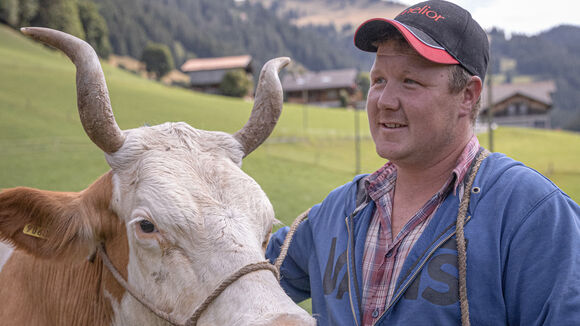
340 farmers with their almost 11,000 cows tend the landscape in the region.
Most of the farms operate on 10–30 hectares of farmland and are pure family businesses. In summer, the dairymen spend 8–10 weeks with their cows on the Alp, where they produce the special Alpine cheese. Besides cheese, our farmers also produce other local products (herbal tea, syrup, butter, dried sausages, "Nidletäfeli" caramel and more). Some of them sell these in their self-service boxes along hiking trails, directly from the farmstead or on the Alp. In addition, many of these products can also be found at the special goods markets in the various villages.
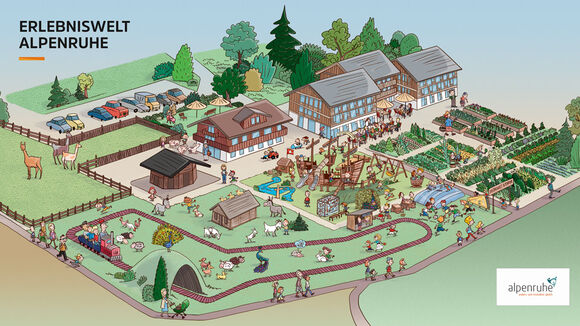
Products from the Alpenruhe Foundation – different and yet the same
There are 55 workspaces for people with a physical, mental and/or psychological disability, who produce a wide variety of objects from different materials such as paper, wood and clay. They also offer various local delicacies, such as "Saaner-Brätzeli", local tea, herbal salt or dried apple rings. You will find also many original gifts for children or decorations for your home and garden. Along with the produce shop, a pleasant coffee shop invites you to linger. Kids can let off steam in the large adventure world with a petting zoo.

Gourmet potatoes from Abländschen
Regional products are becoming increasingly popular. This is particularly important for Gstaad as a gourmet destination. Now it will be possible to serve regionally grown potatoes in Gstaad.

1,800 kg of flax from the mountains - "linen" is planted once more in Saanenland
In summer 2022, André Grossmann and Noëlle de Kostine started this pilot project on three fields in Saanenland and Pays-d'Enhaut. Growing flax is not too difficult – but harvesting it is. The plants are pulled out of the ground, complete with roots. This ensures that the fibres stay intact. Then comes the drying. During this process, the stalks are spread out on the field and the alternation of dew, sun and rain as well as fungi and bacteria loosen the bond between the fibre bundles and the surrounding tissue (approx. four weeks, during which the flax stalks have to be turned once to five times a week). Carrying out the further processing in Saanenland is not yet possible.
Regional craftsmanship
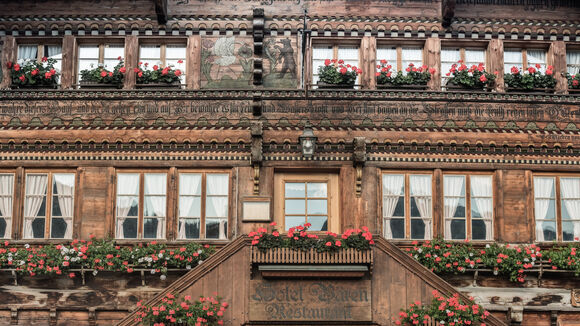
Wooden chalet construction from local resources
"Do not direct all your energy to fighting the old, but to building the new." (Socrates)
The typical wooden chalets have always been part of the Saanenland. They lend the villages their authentic charm and homely atmosphere.
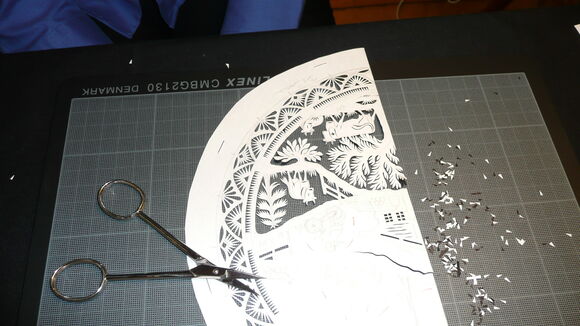
Traditional paper-cut silhouettes
Hans Jakob Hauswirth (1809–1871) created the first Saanen paper-cut silhouette with black paper on a white background. The paper-cutting technique continued to develop, and Louis Saugy also achieved success outside his home country. Christian Schwizgebel and David Regez later specialised in lifelike animal worlds. Today, several regional artists have become silhouette specialists. Each with their own style – but all sharing a love of detail. Today, the various motifs can be found on cups, plates, cars or even as tattoos. You can find paper-cut silhouettes at the Hausweberei-Heimatwerk in Saanen.

Enzian pottery – regional ceramics for everyday use
In the Saanen pottery, where ceramics are still made by hand, you have the unique opportunity to witness how a small work of art is created from a piece of clay. Be inspired!
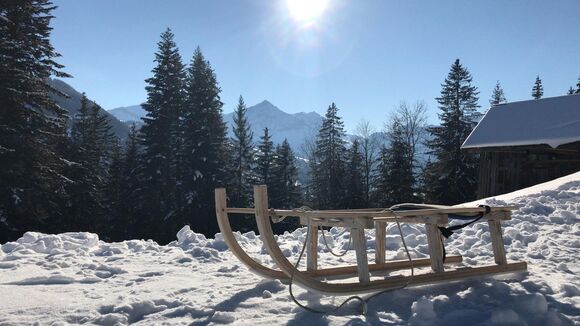
Saaner sled
The Saanen sledge construction has a long tradition in the Saanenland. The Raaflaub family from the Grund produced the first Saanen sledges as early as 1920/1921. From 1968 Walter Raaflaub took over this craft from his father and built countless sledges until his 91st birthday.
Now mainly Andreas Kolly and Mathias von Siebenthal, together with Patric Seewer, produce the somewhat deeper and wider Saanen wooden sleds. While Andreas Kolly's sleds are original Saanen sleds, Mathias and Patric use plastic runners (instead of iron) to improve gliding. In addition, these sleds are also easier to maintain (no rusting). His sleds even have their own name: "Fluschi".
Have we gotten you excited? Contact the two manufacturers at: wissiflueh@gmx.ch (von Siebenthal Mathias) or andreas.kolly@bluewin.ch .

Saanen bells
In the past, bells served as protection against evil spirits. Today, they are used by farmers, especially on Alpine pastures. They can find missing cows by following the ringing of the bells. That is why the cows are adorned with bells when they are driven up to the mountain pastures or back down.
The famous Schopfer/von Siebenthal bells were cast in Saanenland from 1819 to 1964. They still are used today in Alpine farming, and the much-loved bells still fetch high prices.
Saanen bells, a never-ending success story. You can see, hear and feel them in the Museum of the Saanen Landscape.



